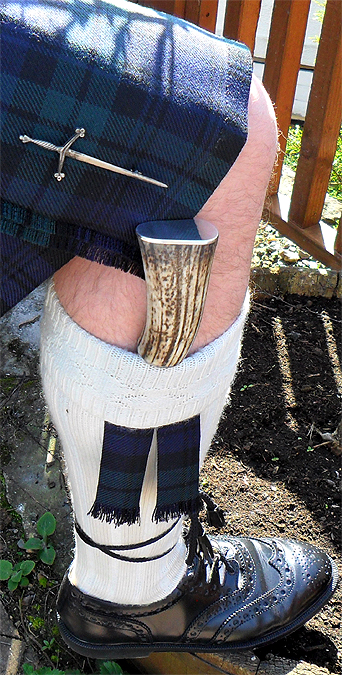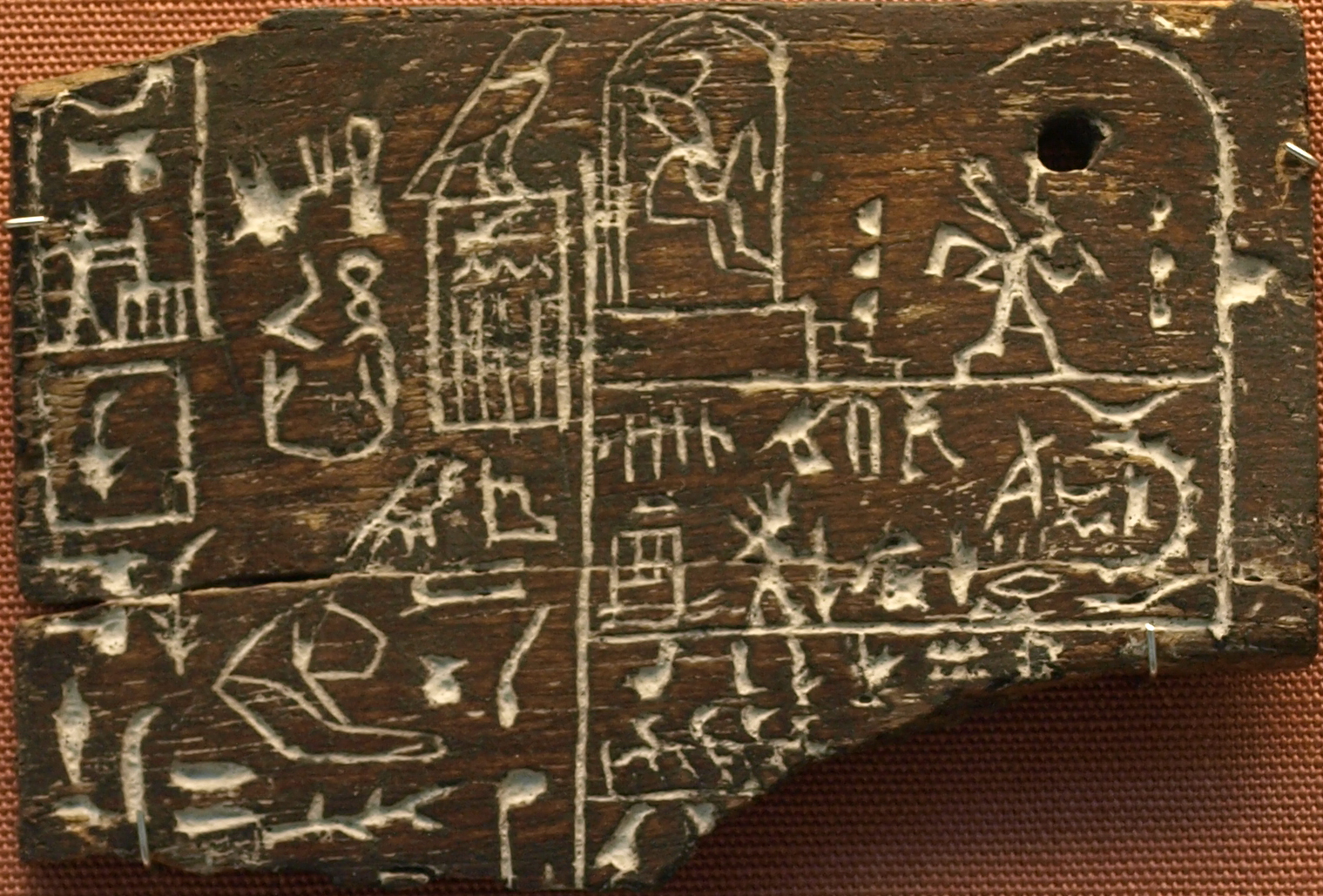|
Sgian-dubh
The ( ; ) – also anglicized as skene-dhu – is a small, single-edged knife () worn as part of traditional Scottish Highland dress. It is now worn tucked into the top of the kilt hose with only the upper portion of the hilt visible. The is normally worn on the same side as the dominant hand. Etymology and spelling The name comes from the Scottish Gaelic , from ''sgian'' ('knife') and ''dubh'' ('black', also with the secondary meaning of 'hidden'.). Although ''sgian'' is feminine, so that a modern Gael might refer to a black knife as ''sgian dhubh'', the term for the ceremonial knife is a set-phrase containing a historical form with lenition#Blocked lenition, blocked lenition. Other spellings are found in English, including ''skean-dhu'' and ''skene-dhu''. The Gaelic plural, , is only rarely encountered in English. Origins The may have evolved from the , a dagger that could be concealed under the armpit. Used by the Scots of the 16th, 17th and 18th centuries, this knife w ... [...More Info...] [...Related Items...] OR: [Wikipedia] [Google] [Baidu] |
Highland Dress
Highland dress is the traditional, regional dress of the Highlands and Isles of Scotland. It is often characterised by tartan (''plaid'' in North America). Specific designs of shirt, jacket, bodice and headwear may also be worn. On rare occasions with clan badges and other devices indicating family and heritage. Men's Highland dress typically includes a kilt or trews. Although this may consist of clan tartan, it is more usual for tartans to be chosen for aesthetic reasons. A tartan full plaid, fly plaid, or short belted plaid may also be worn but usually only at very formal events or by the groom at a wedding. There are a number of accessories, which may include but are not limited to: a belt, sporran, sgian-dubh, knee-socks with a cuff known as kilt hose, garters, kilt pins and clan badges. Women's Highland dress is also based on the clan tartan, either that of her birth clan or, if married, that of her spouse's clan if she so chooses. Traditionally, women and girls ... [...More Info...] [...Related Items...] OR: [Wikipedia] [Google] [Baidu] |
Smoky Quartz
Smoky quartz is a brownish grey, translucent variety of quartz that ranges in clarity from almost complete transparency to an almost-opaque brownish-gray or black crystals. The color of smoky quartz is produced when natural radiation, emitted from the surrounding rock, activates color centers around aluminum impurities within the crystalline quartz. Varieties Morion is a very dark brown to black opaque variety. Morion is the German, Danish, Spanish and Polish synonym for smoky quartz. The name is from a misreading of ''mormorion'' in Pliny the Elder. Cairngorm is a variety of smoky quartz found in the Cairngorm Mountains of Scotland. It usually has a smoky yellow-brown colour, though some specimens are greyish-brown. It is used in Scottish jewellery and as a decoration on kilt pins and the handles of (anglicised: ''sgian-dubhs'' or ''skean dhu''). The largest known cairngorm crystal is a specimen kept at Braemar Castle. Uses Smoky quartz is common and was not historical ... [...More Info...] [...Related Items...] OR: [Wikipedia] [Google] [Baidu] |
Bog Wood
Bog-wood (also spelled bogwood or bog wood), also known as abonos and, especially amongst pipe smokers, as morta, is a material from trees that have been buried in peat bogs and preserved from decay by the acidic and anaerobic bog conditions, sometimes for hundreds or even thousands of years. The wood is usually stained brown by tannins dissolved in the acidic water. Bog-wood represents the early stages in the fossilisation of wood, with further stages ultimately forming jet, lignite and coal over a period of many millions of years. Bog-wood may come from any tree species naturally growing near or in bogs, including oak (''Quercus'' – "bog oak"), pine (''Pinus''), yew (''Taxus''), swamp cypress (''Taxodium'') and kauri (''Agathis''). Bog-wood is often removed from fields and placed in clearance cairns. It is a rare form of timber that is claimed to be "comparable to some of the world's most expensive tropical hardwoods". Formation process Bog-wood is created from the trun ... [...More Info...] [...Related Items...] OR: [Wikipedia] [Google] [Baidu] |
Scottish Stag Antler Sgian Dubh
Scottish usually refers to something of, from, or related to Scotland, including: *Scottish Gaelic, a Celtic Goidelic language of the Indo-European language family native to Scotland *Scottish English *Scottish national identity, the Scottish identity and common culture *Scottish people, a nation and ethnic group native to Scotland * Scots language, a West Germanic language spoken in lowland Scotland * Symphony No. 3 (Mendelssohn), a symphony by Felix Mendelssohn known as ''the Scottish'' See also *Scotch (other) *Scotland (other) *Scots (other) *Scottian (other) *Schottische The schottische is a partnered country dance that apparently originated in Bohemia. It was popular in Victorian-era ballrooms as a part of the Bohemian folk-dance craze and left its traces in folk music of countries such as Argentina (Spanish ... * {{disambiguation Language and nationality disambiguation pages ca:Escocès ... [...More Info...] [...Related Items...] OR: [Wikipedia] [Google] [Baidu] |
Knife Legislation
Knife legislation is defined as the legislation, body of statutory law or case law promulgated or enacted by a government or other governing jurisdiction that prohibits, criminalizes, or restricts the otherwise legal manufacture, importation, sale, transfer, possession, transport, or use of knives. Carrying knives in public place, public is forbidden or restricted by law in many countries. Exceptions may be made for hunting knives, pocket knives, and knives used for work-related purposes (kitchen knife, chef's knives, etc.), depending upon the laws of a given jurisdiction. In turn, the carrying or possessing of certain types of knives perceived as deadly or offensive weapons, such as switchblade knives and Butterfly knife, butterfly knives, may be restricted or prohibited. Even where knives may be legally carried on the person generally, this right may not extend to all places and circumstances, and knives of any description may be prohibited at schools, public buildings, courthouse ... [...More Info...] [...Related Items...] OR: [Wikipedia] [Google] [Baidu] |
Criminal Justice Act 1988
The Criminal Justice Act 1988 (c. 33) is an Act of the Parliament of the United Kingdom. Title The title of this Act is: Unduly lenient sentences In England and Wales, the Act allows anybody to ask the Attorney General's Office for a sentence they consider unduly lenient to be reviewed; the Office can review sentences given by the Crown Court in England and Wales if requested to. The Attorney General can then, within 28 days of the sentence, decide to refer sentences for certain offences to the Court of Appeal if they consider that the sentence might be unduly lenient. The Court of Appeal will only find a sentence to be lenient, and increase it, if it falls outside the range of sentences which the trial judge could reasonably consider appropriate considering all the relevant information available at the time. This is sometimes called the 'unduly lenient sentence scheme'. This provision entered into force in 1989, and was first applied in July of that year. The controversi ... [...More Info...] [...Related Items...] OR: [Wikipedia] [Google] [Baidu] |
Criminal Law (Consolidation) (Scotland) Act 1995
The Criminal Law (Consolidation) (Scotland) Act 1995 (c. 39) is an Act of the Parliament of the United Kingdom passed to consolidate certain enactments creating offences and relating to the criminal law of Scotland. Part I - Sexual Offences Incest and related offences *Section 1 consolidates the offence of incest. It applies when a male and a female related in certain ways have sexual intercourse. It applies only to close relatives (father, son, grandfather, grandson, great grandfather, great grandson, brother, uncle, nephew, and female equivalents) and to current or former adoptive fathers, mothers, sons and daughters, and applies to both full blood and half blood relationships. There are defences where the accused proves that he did not know that the relationship existed, where the accused did not consent and where the parties were married outside Scotland. This section consolidates section 2A of the Sexual Offences (Scotland) Act 1976, as inserted by the Incest and Relat ... [...More Info...] [...Related Items...] OR: [Wikipedia] [Google] [Baidu] |
Damascus Steel
Damascus steel (Arabic: فولاذ دمشقي) refers to the high-carbon crucible steel of the blades of historical swords forged using the wootz process in the Near East, characterized by distinctive patterns of banding and mottling reminiscent of flowing water, sometimes in a "ladder" or "rose" pattern. "Damascus steel" developed a reputation for being tough, resistant to shattering, and capable of being honed to a sharp, resilient edge. The term "Damascus steel" traces its roots to the medieval city of Damascus, Syria, perhaps as an early example of branding. However, there is now a general agreement that many of the swords, or at least the steel ingots from which they were forged, were imported from elsewhere. Originally, they came from either Southern India, where the steel-making techniques used were first developed, or from Khorasan, Iran. The methods used to create medieval Damascus steel died out by the late 19th century. Modern steelmakers and metallurgists have stud ... [...More Info...] [...Related Items...] OR: [Wikipedia] [Google] [Baidu] |
Silver
Silver is a chemical element; it has Symbol (chemistry), symbol Ag () and atomic number 47. A soft, whitish-gray, lustrous transition metal, it exhibits the highest electrical conductivity, thermal conductivity, and reflectivity of any metal. Silver is found in the Earth's crust in the pure, free elemental form ("native metal, native silver"), as an alloy with gold and other metals, and in minerals such as argentite and chlorargyrite. Most silver is produced as a byproduct of copper, gold, lead, and zinc Refining (metallurgy), refining. Silver has long been valued as a precious metal. Silver metal is used in many bullion coins, sometimes bimetallism, alongside gold: while it is more abundant than gold, it is much less abundant as a native metal. Its purity is typically measured on a per-mille basis; a 94%-pure alloy is described as "0.940 fine". As one of the seven metals of antiquity, silver has had an enduring role in most human cultures. Other than in currency and as an in ... [...More Info...] [...Related Items...] OR: [Wikipedia] [Google] [Baidu] |
Ebony
Ebony is a dense black/brown hardwood, coming from several species in the genus '' Diospyros'', which also includes the persimmon tree. A few ''Diospyros'' species, such as macassar and mun ebony, are dense enough to sink in water. Ebony is finely textured and has a mirror finish when polished, making it valuable as an ornamental wood. It is often cited as one of the most expensive woods in the world. Etymology The word ''ebony'' comes from the Ancient Egyptian ', through the Ancient Greek ('), into Latin () and Middle English. Species Species of ebony include '' Diospyros ebenum'' (Ceylon ebony), native to southern India and Sri Lanka; '' D. crassiflora'' (Gabon ebony), native to western Africa; '' D. humilis'' (Queensland ebony), native to Queensland, the Northern Territory, New Guinea and Timor; and '' D. celebica'' (Sulawesi ebony), native to Indonesia and prized for its luxuriant, multi-colored wood grain. Mauritius ebony, '' D. tessellaria'', was largely exploited by ... [...More Info...] [...Related Items...] OR: [Wikipedia] [Google] [Baidu] |
Stainless Steel
Stainless steel, also known as inox, corrosion-resistant steel (CRES), or rustless steel, is an iron-based alloy that contains chromium, making it resistant to rust and corrosion. Stainless steel's resistance to corrosion comes from its chromium content of 11% or more, which forms a Passivation (chemistry), passive film that protects the material and can self-healing material, self-heal when exposed to oxygen. It can be further alloyed with elements like molybdenum, carbon, nickel and nitrogen to enhance specific properties for various applications. The alloy's properties, such as luster and resistance to corrosion, are useful in many applications. Stainless steel can be rolled into Sheet metal, sheets, plates, bars, wire, and tubing. These can be used in cookware, cutlery, surgical instruments, major appliances, vehicles, construction material in large buildings, industrial equipment (e.g., in paper mills, chemical plants, water treatment), and storage tanks and tankers for ch ... [...More Info...] [...Related Items...] OR: [Wikipedia] [Google] [Baidu] |





